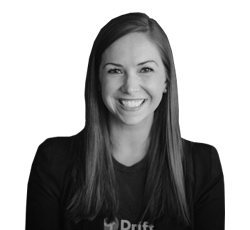You’re using Net Promoter Score (NPS) wrong! Segmentation is the 🔑 key to retention
Adam Dorrell
|
CEO & Founder
of
CustomerGauge


Adam Dorrell


Episode Summary
Today on the Churn.fm, we have Adam Dorrell, the CEO and Founder of CustomerGauge.
In today's episode, we talked about the importance of Net Promoter Score or otherwise know as NPS, why it's more than just a metric, and how companies can implement NPS results into their workflow.
We also discussed why customer feedback is an impactful growth lever, how to reach out to customers strategically, and how you can make feedback actionable.
Adam also shared the one question that he hopes more businesses ask, and his insights on things that worked at CustomerGauge while tackling churn.
As usual, I'm excited to hear what you think of this episode, and if you have any feedback, I would love to hear from you. You can email me directly on Andrew@churn.fm. Don't forget to follow us on Twitter.
Adam Dorrell
Recommends
Why Customer Churn Is Inevitable If You Are Not Closing The LoopNPS 101: Retention Management to Combat ChurnMentioned Resources
Transcription
Andrew Michael
Hey, Adam, welcome to the show.
Adam Dorrell
I do it's great to be on. Thanks for welcoming me on today.
Andrew Michael
It's a pleasure. So for the listeners, Adam is the CEO and founder of customer gauge customer gauges a SAS solution that allows companies to monetize the use of Net Promoter across their business. And prior to customer gage Adam was a director of sales at Sony and interim manager of online sales Phillips So my first question for you Adam is what is NPS and why do you believe that is such an important metric to track.
Adam Dorrell
Now, that's a great question. What is NPS Net Promoter system to give it its full name? Well, let me tell you how I got introduced to it. To put some perspective on it was in 2003, just at the end of 2003, I was working for a large electronics Corporation. And one of the things that really occurred to me that they are not doing a very good job of retaining their customers at all. In fact, they're not reaching out to the existing customers. So we hatched a plan to try and understand what they're to get some feedback from them. And at the time, the only way of doing some stuff was to ask a 40 page question, you'll be aware of this stuff that people ask, you know, 40 questions give me Tell me about your satisfaction on this area of the business. And I read an article in the Harvard Business Review, written by Fred Rochelle, that it was like, you could do stuff with one question. Yeah. Just you just did with one question. And if you know your customers, and you got some background with the metadata, why else more and I was really struck by this and at that time, I was really excited. Old on that. And what I've discovered by using Net Promoter for goodness me nearly 16 years now is that in a way, it's not the score that's important. It's all the metrics around that is how many people you're contacting the reach, how many people are responding, because in a way, that's a better measure of how engaged you are with the customers. And to be honest, what it's all about is getting better at retaining customers. That's what this is, this is good, forward looking metric that helps you predict churn. And that's where the money is.
Andrew Michael
Yeah. So I think like there's quite a bit to break down there a little bit. And obviously, I know we had discussed prior to the show, I have one or two issues, which I would like to bring up in a little bit. But I think starting out, I think you mentioned like, it's it's not necessarily just about the metric. Like maybe you want to talk us through that a little bit. And I know you mentioned like, it's how many people are actually engaging and I I do believe as well, that is a very good proxy of people actually responding to you. When you ask them questions, it's a good indication of engagement, but Maybe talk us through a little bit more about that concept.
Adam Dorrell
Sure. Look, I mean, when when people have people have been serving for years, I mean, I've been in marketing for a very long time. And we were doing paper based surveys and telephone surveys for many years before we're doing electronic, sending it or receiving other stuff. And but typically started out with having a sample of customers, you know, you're trying to get a sample of customers or be representative of your business. And then later, we've seen this where people having pop ups on their sites, or in journey as they're called, or just emails going out to customers. But I think that especially in the b2b world, that's completely wrong. I want to turn the telescope around the other way where you say, Okay, let's look at our total revenue base, and then start with the biggest customers and make sure we're getting customer responses from those. And that's what we really mean by reach and coverage. These are the important metrics that we operate with.
Andrew Michael
So it's really like being able to understand and segment the response Is across the different demographics that you have on your satellite as user base? Yeah.
Adam Dorrell
Yeah. In simple terms, one of the ways we do this was to say, how much of your revenue Are you getting responses from, we've got the coverage. And it's shocking when we go into customers, and we do this, that we think you should have at least 80% of your revenue covered by some sort of customer feedback. Yeah, and most customers would go into, they're like, oh, man, we don't even know. And then when you work it out for the first time, maybe 20%. So there's a, there's some big work to be done. And that's really, that's really what we do at customer gauge
Andrew Michael
is really just trying to make sure they're interacting with customers and collecting that feedback constantly. I definitely see that as an issue as well as it. Like when we thinking about customer feedback, it's really, it's not normally focused enough. And it also is you're not really understanding what the spread is. So sometimes, it's easy to get shifted and direct in the wrong direction when you don't really have an even spread or good distribution. So having that underlying view, I think can be very powerful.
Adam Dorrell
Yeah, that's a pretty good way of putting it.
Andrew Michael
So the thing is, well, I think Just to for the listeners or for people that aren't familiar with the NPS, so like typically MPs is a question a single question you ask your customers and it normally goes like something along the lines of on a scale of zero to 10. How likely is that you'd recommend us either your product or service to a friend or colleague. And then it's normally followed by like, what is the primary reason for your score? So I mentioned to you is like I personally have sort of an issue with this. And it's something that actually came about one more time with not join, one of our editors fear brought it up in it's really a semantics question. And I think the two the two issues I have with it is the first thing is, how likely is it that you would recommend so you're asking a question to people to base to give you an answer based on a future opinion of forward looking event, which we know like humans are not very, not the best predictors of future events. I'm not really good at predicting the past. So one would have not better measure be actually to awesome. Have you recommended our product or service recently. And then the second part of this and the semantic elements is really take it to a friend or colleague. So I don't know about you. But I don't know, I don't have many friends that are interested in the same software or the same business time that I am. And at the same time, the same colleagues, I really need to be in my team. So currently, I'm in the business intelligence team at Hot jar. And if I went to my friend, I'm not going to be going and recommending any friend Tableau or mode anytime soon. Neither Would I recommend it to any of my other colleagues outside of BI. So what are your thoughts on this? I know you have your own thoughts as well on on the metric and it's not necessarily about it. So I'd like to hear like what you think.
Adam Dorrell
I think they're really good points you bring up and you're not alone in this. By the way, there's quite a lot of criticism about out there on the net promoter score. It's too simple. People say how can you get everything from one from one question? So there's definitely some grounds to think about that. But look, I'm, I'm, I'm a simple guy when it comes to this. And the first thing I like about the net promoter score for whether it's flawed or not, is I like the fact that it's become a standard. First of all, it's open source. And it's well documented. And let's be difficult to benchmark between companies. It's the best thing that we've gone out. So that's the number one thing that I think that you can criticize it in the way that you can criticize any metric, but there is some some validity to it. Absolutely. And then the second point that but I you know, you're absolutely right about the thing about recommending to a colleague, I mean, we almost offer exclusively in the b2b space, which is not the same, you know, is recommending it to your mother or friends. And in fact, there might be some very good commercial confidentiality reasons why you wouldn't recommend a service to somebody you know, if you really liked it, giving you a competitive advantage. Why would you do it? Yeah, similarly, we've got some government clients, you know, already monopolistic clients, you can't recommend something to somebody else if you have no choice. So you're right. There are flaws in the way that you answer this. And I think you made a suggestion and that you recommend it to somebody like me. It's really good idea. I like that. Yeah. One of the things that I like about this, and in that sense, I don't think and this this might be heresy. So I've got to be careful about saying this. But in a way, I don't think it matters what metric you use, you could use customer satisfaction, or CS, or MPs or made up metric, as long as you are consistent. And you just keep doing it, you don't change. Because I think there's something about seeing the symbolism of a of a like a scale, that's the technical name for zero to 10, or zero to five or something like that. And as people see that, they don't even read the words they just get, oh, I understand what I got to do. I've got to rate this. Yeah, you know, I'm saying I think it's like, that's the reflex that we build into people. To be honest, I think it's less about what you asked people what the question is, I think it's more what you do with it afterwards. You know, that's a whole topic I'd love to dig into forget the time about when you give feedback to a company, what do they do with it?
Andrew Michael
Yeah. And I think that makes total sense as well. So it's definitely like I do see the value as well. And I'm not totally sort of like beating up NPS because I do see it is, it is a valuable metric, it has become a really good strong industry standard. It's just some things I feel they obviously serious improvements, like in any sort of thing. So let's, let's take it for a minute, I really do see it as a valuable metric, and its value in it. So going forward, like, what are some of the things that you see in companies and how are they using this metric effectively? So I think like for us, I've seen like following the trends and just seeing, like, how you're trending over time, it's really powerful, like few, but what are some of the interesting ways you've seen companies use MPs and use the the feedback that comes the results of it within a workflow?
Adam Dorrell
Yeah, I think I think you pointed out the most obvious one, which is to a trend, you know, I think Peter Drucker said, If you can't, if you can't measure it, you can't, you can't improve. So the first thing to do is to try to get a baseline of how your satisfaction isn't that getting customer feedback and reading the comments was always a very powerful weapon. But also it can be a bit scary, because you're asking people for deep feedback. And to be honest, a lot of people in businesses are resistant to that, you know, the change, you don't hear the bad news. So those are the first two things, you get your establish a baseline score, and you just try to understand what your customers are saying about you. And then you want to organize that on a very regular cadence, we recommend that you do it quarterly with your biggest clients. So you keep measuring the relationship with with with the clients not making sense. So that's what that's one thing about getting the metrics back. There's a ton of useful stuff that comes out of that which is like what is the response rate, as I said, and what's the coverage and reach how many people you're reaching in your largest accounts. And those are really good metrics. Even without Looking at the NPS score or, you know, substituting the question, yeah, but then I think the next thing is, is that so that's the first level of maturity that we have, which is like the measure stage, everyone can do that. But then the next stage, which we call act, well, this is a step of corporate courage. So it requires people in the organization to actually do something about the customer feedback in a structured way. So for example, it was negative feedback, you know, have a process where you can get back to your clients in a timely manner. And we recommend setting up a service level agreement of say, 48 hours to do that as a maximum and kickbacks and say, Look, we're really sorry about this, what we'd like to help. Yeah, he'd be really amazed, Andrew, about that, about how few companies do that. We think our client base when you first started coming into this only 20% of doing it, we maximize that over time to about 80%. So this is the first step that you do just to just getting back to be
Andrew Michael
I think that's very good point. I think it's stuck with feedback in general. I think it's often thought of as sort of like a warning Way discussion. It's almost like I'm asking you for something, I'm expecting a response, but don't expect a response back from me. So the thing, where, if anything, it's like a support channel. Because if somebody is giving you feedback, it's an opportunity then for you to engage to build that relationship and to make sure that you're supporting your customer. I think that's an excellent point you make.
Adam Dorrell
Yeah, I don't know about you. But my mother always told me to be polite and say thank you for things. And you know, I believe it's really important at the base level, if you get some feedback from a client should say, thank you. I mean, effectively, they're acting as a consultant. They're spending some time on this. And if you think about Andrew, remember the last time somebody actually said to you, thanks for your feedback. You remember it?
Andrew Michael
Yeah. No, it's you know, it's I you I forgot to ask you this in the UK, because it's definitely have a good way with their madness, please.
Adam Dorrell
Okay, well, I just think it's I just think it's polite to say thank you for this and maybe I'm old fashioned. I'm not expecting people to write, you know, to hand write thank you notes. But just, for example, you will also receive a one of the first steps you can do into this is to say, once a month, summarize the feedback, you go more with your clients and send a note out to everybody whether they answered or not to say, Hey, this is what we learned from our customer base this month. I mean, it's so simple, right? But can you ever remember getting that it's, it's almost impossible to the extent that also we know that if you if you fill in a survey, and then somebody comes back to you within two hours to say, Hey, man, that's thanks for the feedback, we're going to have a look at that. He'd fall off your chair. And it's like, that's what I call dinner party conversation, isn't it? Yeah, it's, it's if companies can do the next stage, which is what we call the act, acting on the stuff, they can have an immediate competitive advantage and we've got stats to back this up. It's called double leg growth. By doing this and really start to reduce churn, this is the first thing that companies can do to really just, it's just simple, just like thank you all for listening.
Andrew Michael
Yeah, I think like we actually in a lucky position to have Joe, we have one of our directors of customer experience actually does a monthly summary for us of our MPs results. And it's always really good report that I look forward to because it's one of those things, which is like super rich and customer feedback. And just, it's interesting seeing not only the trends of like your MPs score, but the different topics and how they're trending in terms of feedback. So sort of classifying the types of feedback are coming in, and then being able to see okay, like, this week, like we have NPS, the detractors are really coming from bugs. And then like, as you get more and more entered, you can actually start tying it back to actually be events or interactions that have happened within the company or within the product. So
Adam Dorrell
congratulations, I do that. That's really good. So I'm going to challenge you on something because I think it's quite good that we do it to each other. So why are you sharing that with your clients? I mean, that, to me, seems like an ideal thing. You should send it externally. But there's like this takes corporate courage to do it. You know, not everybody's ready to do that. But I'm telling you, the more transparent You are the companies that are transparent are the ones that will really succeed, I believe.
Andrew Michael
Now I actually I love that idea. And I'm definitely going to pass it on to the team. Because it is an interesting because I mean, it's something we always actively working on. We're always actively trying to improve. I think we do maybe sometimes mentioned in blog posts here and there. But actually sharing that reports, I think, yes, at least it's super interesting for us all internally, I'm sure maybe some of our customers would find it to
Adam Dorrell
what what I'd like to do if I can just segue into the next stage. So we spoke, we said we come to start with measuring and then they do x and the third stage and we see is when they start to grow with it. So they become more confident about, okay, we're getting customer feedback, let's really, we started to correct the biggest faults, we understand what goes on it, then they start to use the feedback for growth. Now you'll know what this is, is when you start getting 10s from customers is what's quite good about Net Promoter is you can talk about people having a nine or a 10 and their promoters they're likely to tell other people about your business. Yes, that's the theory. So you can then reach out to the people that give you a 10 and say, Hey, thank you so much for that welcome. What are the tools that can give you to go off and promote my business? Yeah, I remember reading something book Phil, great guy called Guy Kawasaki from about 10 years ago about how to really monetize your promoters. And it's a really simple thing to just get people literature or invite them to co co create with you. These people can be your best the one of your best marketing channels, and it's two ministers are very low cost channel if you get it right. So this is the face that we see customers doing. And I To give you an example, when you get to this stage, you see b2b companies then start to embrace the concept of reviews. Which kind of answers the thing we were talking about before about saying giving customers feedback about people today. So if example of the customer gage site going into the bottom, we proudly display on net promoter score, and recent comments from clients, which doesn't matter. You don't have to worry about it. But this is about I believe that being transparent Somebody wants to know, are we a good partner to work with? Now they can go to G to crowd or some of the other sites or they can come to our website and actually look and see what what our customers are. Some of the things some of the public comments are can be biting, but they're always constructive. And that is how I believe that a company should be operating in the in these years.
Andrew Michael
Yeah. And to your point as well around the growth side and around like having promoters. That's actually something that we interviewed Vinay from trust radius this year, then, you recommended actually, I think it might not have been specifically MPs. But when you're getting really good promoters and your people loving your production, you're getting collecting that feedback, it's an excellent opportunity to ask them to actually leave a review. So in terms of growth, it's not only about promoting it, but there's also channels where they can go out and did other people know how happy they are with the service because I totally agree with you like this trust and transparency is only becoming more and more important, and people having less and less trust with software companies, but they would trust a review and a review site to record from a friend to make a decision, so,
Adam Dorrell
yeah, I mean, I really believe this is I think this is a really good area to educate companies on. I mean, Andrew, this is something I'd love listening to Jennifer because it's all about helping companies hold on to clients, you know, and helping improve retention. And you know, this is it's an underserved science, we can really do a lot of education. I think we're doing a great job in this. So and in our world, we believe that what we do with Net Promoter really is one of the weapons that you can use in the in the fight against churn. We've had we call this whole approach and b2b customer experience we call it account experience because it's more complex than than dealing with b2c customers. You know, you've got multiple stakeholders in each company, you've got some million dollar deals you need to deal with. And there's very little science behind it. But this is really what I love to talk about the customer gauge, but how we can help companies really monetize the customer base to to grow rather than just Having to acquire new customers?
Andrew Michael
Absolutely it is. It's definitely like virgin territory, the moment and sort of everybody out there trying to figure their way around it. So I've really liked the through this process of Jennifer, Mr. Flint, a ton from so many different people and feels like there's a lot of great information living inside of people's heads just like yourself. So the more we can cover this, the better. The next thing I want to ask you a little bit about so you touched on briefly of like when you should be serving customers, and when's the right time, and you mentioned quarterly, but is there any other tips that you would in like, talk about in terms of timing, like, Is there a really good time for the first time you would seek sort of an NPS response? Or, like, how do you typically advise customers?
Adam Dorrell
Yeah, I mean, I believe the most important area is in the post purchase place. You know, it's when somebody becomes a customer you've got you should reach out to them on a regular basis. I recommend quarterly because it's a nice cadence. Most companies do like a quarterly business review. And if you survey before the Business Review you want, you've got some great stuff to talk about. You can say, Hey, here's what you here's what you think of your investment in my company. I mean, what's what's a better way of starting a conversation than that? So that's, we call this relationship Net Promoter. And then there's some other touch points, you know, you you touched on this yourself, like, support tickets as a very obvious one. How do we how do we perform in the support ticket that's more in the transactional level, but it can really help. You know, you're in the software business as well. So I'm pretty sure you want to know what your users are interacting with, well, maybe Net Promoter is not the best tool for that. But you'd want to find out how, how they using a particular feature. And so you'll probably using Pop, pop some stage to do this. And that's another useful thing. I also like other ways of doing it, we on our side, we integrate our sales team, so that when we do a demo, or when we have an opportunity, we also serve for our customers, which we actually get surprisingly great information from Another thing do we do what we call win loss? So, you know, we don't win every deal. And if we, if we lose it in Salesforce, it flips over and we go out and automate, go go to the client. So the prospects and say, how was it and often we get a detailed response, like, you know, you didn't fit the bill or we're not ready to do the stuff. I think that's a really underused part that the companies are not doing. So easy to do. And, and, you know, it's the same with off boarding, you can learn a lot from when you afford a client if you can do that as well as you can and onboarding. Yeah. So my having a few multiple touch points is great. Most clients that we get most prospects become into a doing bits of this, but they're using multiple, multiple systems. And so that's one of things I really like to do custom again, ties those things together, to, you know, to bring in pop ups or other disparate surveys to two singles into the customer. Yeah, to give that tool to customer facing people.
Andrew Michael
And then so you mentioned earlier as well, like it's a liquid scale, and it's not necessarily in pairs. So do you do other things within the platform like cc XES or customer fit scores? Is that something that's possible?
Adam Dorrell
Yeah, we do that. I mean, you know, so see satin CS. And we've seen a bit more few more customers using CS, a customer effort score, which is basically, you know, how would How do you rate this? I gotta be honest, I think that you can bend the NPS scale into to doing this stuff. And as you say, it might not be perfect, but the point is, is that you're consistent across the patch. So anything you can use it for, you know, there's a lot of people also have started to use this for employees as well. So, you know, would you recommend this company to another to a friend or colleague to work for? The point about that, what I like about it, is if you educate people up and smell the company about what a detractor is, and a promoter, that's just a really powerful tool. I think it's always better than several CDs. But you know, I don't have a monopoly on truth on this so people can use whatever they want.
Andrew Michael
So we've gone through three different stages. Now. That when with customers that you're working with in terms of the MPs and how they use it. It's all about implementing getting started with it, then being able to segment and take a deep dive and then actually using it for growth and acting on the feedback. So, so yourself internally, like we talked a little bit about earlier as well in terms of feedback itself, like really making it actionable. What are some tips that you see companies do well and able to make feedback actionable?
Adam Dorrell
That's really good. That's a really good question. Well, you, you want to try and get some themes out of the feedback. And there are a few techniques for doing this. But basically, by bucket icing issues that customers have, you can distribute that around the relevant people in the company. You can always doing it you can either Think of it as issues in the customer journey, but the way I recommend my clients do it is to put the issues at the floor of the VP that run that particular part of the business is you know, like admin or operations support, make them responsible for those issues and get them to fix it. And if you can turn that into like a sort of proxy net promoter score for their business, that's really important. And we started to overlay the revenue of clients on there as well. So you get not just the net promoter score, but also the value of that issue. And that's quite an eye opener, because people can get really distracted by a low score, but it might not necessarily impact that much business. Alternatively, the massive amount of business might be impacted by just a few comments. And so you might my tip is to really make sure that you've got the revenue streams in it as well that for me is the game change. Once we started to get revenue, we call that monetize Net Promoter. That's the thing that moves the needle, because that's how you get the attention of the C suite and your sales team when there's money at stake. So that's, that's how that's how I think it's a successful investor. Listen, if anyone's out there running a net promoter program, that is my first tip for success. Make sure that you're you've got the money on it and you're covering, covering revenue because that's how you get success to change. Things
Andrew Michael
like not all feedback is equal differently. And I think this lesson applies to not just feedback itself, but everything that you do in general. So like in product prioritization, it's really easy to make a product decision based on the number of requests coming in, or the number of users, but really, when you actually put a manager to it, and you see like, what the makeup is of your audience. So that's where the power comes in, in terms of really being able to prioritize and make changes, is actually seeing what the bottom line impact is not just who's got the loudest voice. So who are we hearing?
Adam Dorrell
Oh, I hear what you're saying. That's, that's so true.
Andrew Michael
Cool. So I want to throw up a typical scenario. Now, I do this to everyone that joins the show. Let's pretend you you get a new job at a company and you arrive and channel retention is not looking great. You've been tasked now to help turn things around and you've got three months try and like get some results for the company. What would be some of the first things you do in your time at this company?
Adam Dorrell
Oh, that's a good, that's a really good question. You throw that if you throw it to everybody, that's a really good curveball. Well, I think if you had 90 days to make a difference, if I would go in there, I'd want to make sure I'd want to look at which accounts were risk. We're talking b2b, right? So I'd be looking at which of my clients to be completely honest, not even the from the Net Promoter side, I'd want to know how many contacts I had in each client. And we've got I've got a rule of thumb which is like for bottom $4 million account and about nine good contacts, hundred thousand about six contacts and so on. And I'd want to make sure that I was really having good dialogue with all those with a number of contacts in each business because without that, you've really got a risk of sharing I think, you know, the concept of single point of contact yet box. So that's the first thing and then I'd start by just getting some feedback from people. Again, I'd start by looking at the old 8020 rule, you know, it's like I want to I want to get get responses from my My biggest accounts, and I would take it slowly, I wouldn't go cross the patch, I would do account by account, get some feedback, deal with it, understand the lessons, try and make some quick wins. And by that, you know, just just just getting back to to the clients, there's time for bigger learnings and accuracy later on. But if my first 30 days, if I was able to rescue a couple of accounts, and maybe on Earth a few upsell opportunities, I'd be pretty pleased with that. You know, I'd be I'd be proud to get a good ROI on whatever I was doing. Right out of the gate.
Andrew Michael
Absolutely. And the in terms of that the relationships, the single point of contact being an issue, like what are some of the things that you've seen work successfully? How would you go about expanding the relationships within an organization? What are the typical process look like there for you? Ah,
Adam Dorrell
that's a good point. Well, I probably I would leave that to my customer success colleagues or account managers because these guys are experts at it, but I think that you've got to find ways you've got it. You've got to find the value in yourself. to to to reach out to other people in the business that for example, customer gauge, we think it's really important that not only operational people use it, but we think it's important that the C suite can see the results of the readouts, net promoter score and the responses and maybe even beyond that there are stakeholders like the board, or your, you know, your shareholders that can also use this, we really see this as a growing area. So it's about being able to make sure that in our business, we can reach out to people at multiple levels. And we sort of categorize this, you know, A, B, and C for clarity as the, you know, the people at the top of the business, be the senior managers and see the frontline people. So you need to have a good spread of clothes and ways of doing it. I don't know you. I mean, Andrew, you're also pretty good product expert. It's about making sure that you can break through the silos and deliver that value. Yeah. And, and, but to remind people about why they bought your product in the first place. This is hypothetically Right. Yeah. He was a skinny, fat cat.
Andrew Michael
For sure. So next question I have for you, you can take it as broad or focused as you like in terms of it can either be broad or really focused towards general attention. But what is one thing that people don't ask or are not talking about that you wish they would ask or talk more about?
Adam Dorrell
I wish people thought more about how much revenue is covered by the customer feedback. I think that's the one thing that people ignore. And I think that's the thing that changes the gaming companies, because that mean, it's something you're after for, for internal excellence. And I think that it doesn't matter, you know, and for me, I just think that as long as you keep asking customers regularly and MPs is good, good good for this. You keep doing a consistency. You get a score baseline, and you act on it that that's the secret to growth.
Andrew Michael
Absolutely. Very nice. I like that tidbit. So is anything that you have done interesting at customer gauge when it comes to trying to tackle trend and attention that you're particularly proud of for you think it's been interesting to share with the listeners?
Adam Dorrell
Yeah, I think we, I think we developed this concept of a SWOT analysis, you know, you know, SWAT strengths, weaknesses, opportunities and threats. And it basically it draws up a nice chart with the net promoter score on the x axis and on the y axis, revenue growth if you're able to get those, and you can easily then see, okay, the top right hand corner of the customers that are really important to us, and they like us a lot so we can grow these, but the top left, well, these are the ones that are very important to us better giving us bad score. So we better work on those we better try and rescuing those. And then there are a couple of other corners bottom right is the one which is they love you but they're not spending very much well. There's a great growth opportunity, and then bottom left, maybe it's the one that Most ignored clients that are not spending very much with you and they don't like you. Well, you know, you should second probably. Yeah, I like the clarity of doing that, you know, any for box technique, I think is really good. And that's one of the things I'm particularly proud of. And that works really well with SAS companies are very good understanding that that's one of the things we really like to do. And, you know, it's tedious to draw up in Excel. So that's what we do in real time. And that's really the key to what we do.
Andrew Michael
Yeah, I love that. It's, it's a really interesting way as well to break down the data and seven other viewers or to sort of really understand and even taking this Promoter Score feedback to another level. So it's super interesting. Cool. So I think we're running up close on time here. So Adam, like is anything you want to leave us with? Any other last bits of information? How can the audience keep up to date with you like what, what they should be looking out for?
Adam Dorrell
Well, I want to leave you for the small anecdote if that's okay, because there's a company that we work with which I think Even they taught us some things but also the way I love the way that they go about this. And this is a global logistics company. And they, it's very important their relationships with businesses, they've got very high value business relationships, they turn the whole customer feedback thing into a process. It's almost like a manufacturing process very much like the whole logistics process, you know, you really have to be very defined tolerances and timings. So they've turned their feedback process into that. So they are ruthlessly serving the customers every quarter, they're making sure that they've got enough contacts in each of their clients. And by the way, the very process of knowing that they're going to have to survey them drives that, that the sales people are actually incentive on the number of contacts they have in the response rather than the score, which is a beautiful way of turning it around. Anyway, the results come out. The CEO of the company, every month dials a few of the customers and that that that act, it just shows So many so many good things in my in my eyes that first of the CEOs engaged, he's prepared to reach out to the customers directly. Imagine the surprise, for example, if you got a call from the CEO of a big company, one of your clients say, Hey, listen, we're taking your feedback very seriously. Or saying thank you very much for being a customer. I really liked your comment. That's a very powerful thing. It also has this electrifying effect. Yeah, but it also has this electrifying effect of making the whole company go, oh, okay, we really get this, this has really taken seriously and must do it too. And so they've really driven some great process in this and now another actually assessing future opportunities based on previous customer scores. So they really dropped using it to drive growth. I think it's a really great case study there. You know, just shows that if your if your top management is behind this, that really shows a great a great way of going ahead. So that's my tip when any client that does not help you really good. By the way, if you want to learn about this stuff, we love talking about this stuff. We publish books about this account management of videos there on the customer gage site, so anyone wants to lead some others plenty of free downloads we can learn about the stuff we love. We love talking and teaching about us. Awesome.
Andrew Michael
Yeah, I think that's an excellent point as well. Like if you want to create a culture of it, this needs to come from the top down and excited to dive into some of the material that you do have in your side. So, thanks very much, Adam. It's been great having you on the show today. I really appreciate your time and wish you best of luck going forward.
Adam Dorrell
Thank you so much, Andrew, and to the listeners. I really appreciate you being on today. Thanks.
Comments


Adam Dorrell

A new episode every week
We’ll send you one episode every Wednesday from a subscription economy pro with insights to help you grow.
About
The show

My name is Andrew Michael and I started CHURN.FM, as I was tired of hearing stories about some magical silver bullet that solved churn for company X.
In this podcast, you will hear from founders and subscription economy pros working in product, marketing, customer success, support, and operations roles across different stages of company growth, who are taking a systematic approach to increase retention and engagement within their organizations.







































































































.png)












































.png)
















































